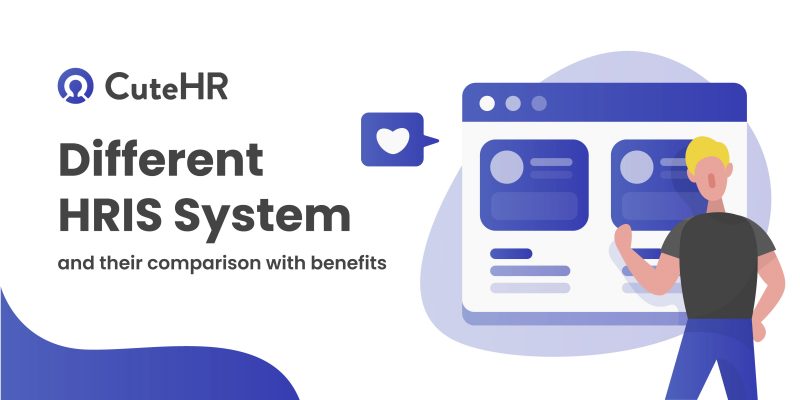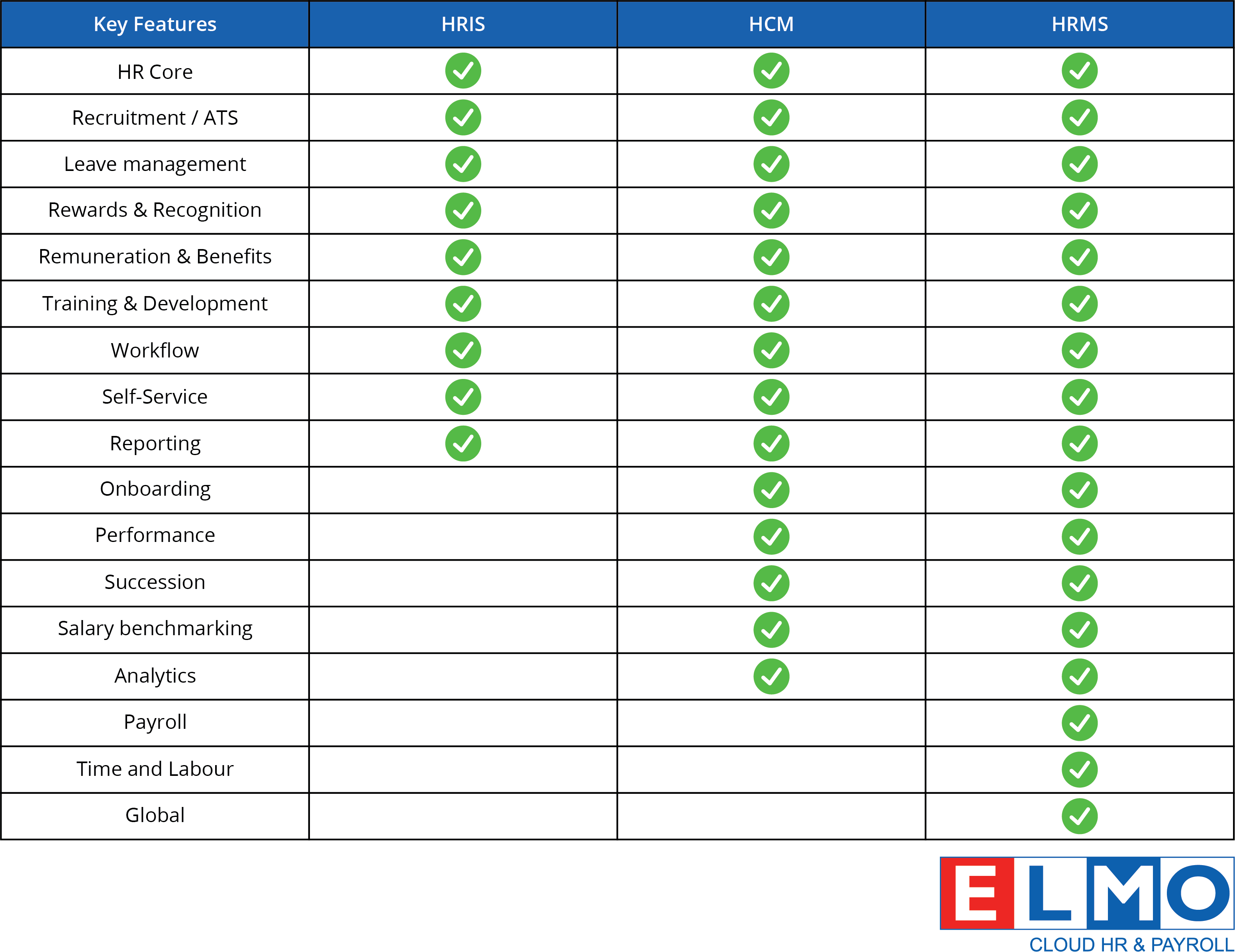Different HRIS software solutions offer a plethora of options for businesses seeking to streamline their HR operations. From cloud-based to on-premises systems, this guide delves into the diverse landscape of HRIS software, empowering readers to make informed decisions about their HR technology investments.
The content of the second paragraph that provides descriptive and clear information about the topic
Different HRIS Software Vendors
HRIS software vendors provide a wide range of solutions to meet the diverse needs of organizations. Here’s a comprehensive list of prominent vendors in the market:
| Vendor Name | Key Offerings | Strengths | Weaknesses |
|---|---|---|---|
| Workday | Core HR, Talent Management, Payroll, Benefits, Analytics | Cloud-based, user-friendly interface, robust functionality | High cost, complex implementation |
| SAP SuccessFactors | Core HR, Recruiting, Performance Management, Compensation | Scalability, integration with other SAP products | Expensive, limited customization options |
| Oracle PeopleSoft | Core HR, Payroll, Time and Labor Management, Benefits | Comprehensive functionality, proven track record | Legacy system, complex user interface |
| ADP Workforce Now | Payroll, Time and Attendance, HR Management, Benefits | Affordable, easy to use, comprehensive support | Limited customization, less advanced features |
| BambooHR | Core HR, Recruiting, Onboarding, Performance Management | Cloud-based, affordable, user-friendly | Limited functionality compared to larger vendors |
Types of HRIS Software
HRIS software can be categorized into three main types based on their deployment model: cloud-based, on-premises, and hybrid. Each type offers distinct advantages and disadvantages, and the choice of which type to implement depends on an organization’s specific needs and preferences.
Cloud-Based HRIS
- Advantages:
- Lower upfront costs and ongoing maintenance expenses.
- Easy to implement and maintain, with minimal IT involvement.
- Accessible from anywhere with an internet connection.
- Regular updates and new features provided by the vendor.
- Disadvantages:
- Less control over data security and privacy.
- Reliance on internet connectivity for access.
- May not be suitable for organizations with highly sensitive data or specific compliance requirements.
On-Premises HRIS
- Advantages:
- Greater control over data security and privacy.
- No reliance on internet connectivity for access.
- Can be customized to meet specific organizational requirements.
- Disadvantages:
- Higher upfront costs and ongoing maintenance expenses.
- Requires dedicated IT resources for implementation and maintenance.
- May not be as user-friendly or feature-rich as cloud-based solutions.
Hybrid HRIS
- Advantages:
- Combines the benefits of both cloud-based and on-premises solutions.
- Allows for greater flexibility and customization.
- Provides a more secure and reliable solution than pure cloud-based solutions.
- Disadvantages:
- Can be more complex and expensive to implement and maintain.
- Requires a high level of technical expertise to manage.
- May not be suitable for organizations with limited IT resources.
Features of HRIS Software: Different Hris Software

HRIS software offers a wide range of features that streamline and enhance HR processes. These features encompass core HR, payroll, benefits administration, and talent management.
Core HR
Core HR features manage employee data, including personal information, job details, and performance evaluations. These features provide a centralized platform for employee records, ensuring accuracy and accessibility.
| Feature | Description | Examples | Benefits |
|---|---|---|---|
| Employee Profile | Centralized storage of personal and professional information | Name, address, job title, department | Easy access to employee details, improved communication |
| Job Management | Organization and tracking of employee roles and responsibilities | Job descriptions, reporting relationships, performance targets | Clear job expectations, enhanced performance management |
| Time and Attendance | Tracking of employee work hours and attendance | Clock-in/out system, leave requests, overtime calculation | Accurate payroll processing, improved workforce management |
| Performance Management | Evaluation and feedback on employee performance | Goal setting, performance reviews, development plans | Improved employee engagement, talent development |
Payroll
Payroll features automate the calculation and distribution of employee salaries, deductions, and taxes. They ensure compliance with labor laws and provide accurate and timely payments.
| Feature | Description | Examples | Benefits |
|---|---|---|---|
| Payroll Processing | Calculation and distribution of employee salaries and benefits | Gross pay, deductions, taxes, net pay | Accurate and timely payroll payments, reduced errors |
| Tax Compliance | Adherence to tax laws and regulations | Withholding calculations, reporting forms | Compliance with tax authorities, avoidance of penalties |
| Garnishments and Deductions | Management of legal obligations and employee-elected deductions | Child support, health insurance premiums | Compliance with legal requirements, flexible employee benefits |
| Reporting and Analytics | Generation of payroll reports and analysis of payroll data | Payroll summaries, cost-to-company reports | Informed decision-making, improved payroll management |
Benefits Administration
Benefits administration features manage employee benefits, such as health insurance, retirement plans, and paid time off. They provide employees with self-service options and ensure compliance with regulatory requirements.
| Feature | Description | Examples | Benefits |
|---|---|---|---|
| Benefits Enrollment | Employee selection and enrollment in benefit plans | Health insurance, dental insurance, 401(k) | Simplified enrollment process, increased employee satisfaction |
| Benefits Management | Administration and tracking of employee benefits | Eligibility requirements, coverage details, claims processing | Efficient benefits management, reduced administrative costs |
| Compliance Management | Adherence to regulatory requirements related to benefits administration | COBRA, HIPAA, ACA | Compliance with legal obligations, avoidance of penalties |
| Employee Self-Service | Online access to benefits information and enrollment options | Plan summaries, enrollment changes, claims status | Empowered employees, reduced HR workload |
Talent Management
Talent management features support the recruitment, development, and retention of top talent. They provide tools for job postings, applicant tracking, performance management, and succession planning.
| Feature | Description | Examples | Benefits |
|---|---|---|---|
| Recruitment | Management of job postings and applicant tracking | Job boards, candidate screening, interview scheduling | Improved hiring efficiency, access to a wider talent pool |
| Performance Management | Evaluation and development of employee performance | Goal setting, performance reviews, feedback | Improved employee engagement, talent development |
| Succession Planning | Identification and development of future leaders | Talent mapping, mentoring programs, career planning | Ensured organizational continuity, reduced turnover |
| Learning and Development | Provision of training and development opportunities for employees | Online courses, workshops, certifications | Enhanced employee skills, increased employee engagement |
Benefits of HRIS Software

HRIS software offers numerous advantages for organizations, enhancing HR operations and overall business outcomes. These benefits include improved efficiency, cost savings, and enhanced employee engagement.
By automating HR processes, HRIS software eliminates manual tasks, streamlines workflows, and reduces the time spent on administrative tasks. This allows HR professionals to focus on strategic initiatives and provide better support to employees.
Amidst the diverse landscape of HRIS software, open source options like open source HR management systems have emerged as viable alternatives. These systems offer the flexibility and customization that organizations seek, while still addressing the core HR functions. They enable businesses to tailor their HR processes to their specific needs, fostering efficiency and adaptability.
The availability of open source HRIS software expands the options for organizations seeking a comprehensive and cost-effective solution for their HR management requirements.
Improved Efficiency
- Automates HR processes, reducing manual labor and errors.
- Streamlines workflows and improves collaboration among HR teams.
- Provides self-service options for employees, empowering them to manage their own HR information.
Cost Savings
- Reduces administrative costs by automating tasks and eliminating paper-based processes.
- Improves compliance with labor laws and regulations, reducing the risk of penalties and fines.
- Provides insights into HR data, enabling informed decision-making and cost optimization.
Enhanced Employee Engagement
- Provides employees with access to their HR information, increasing transparency and trust.
- Empowers employees to manage their own careers and development.
- Improves communication and collaboration between employees and HR.
Considerations for Choosing HRIS Software
When selecting HRIS software, several key factors should be considered to ensure the best fit for an organization’s specific needs.
These factors include business size, industry, budget, and integration needs. It is important to evaluate and compare different software options carefully to identify the one that aligns most effectively with the organization’s requirements.
Step-by-Step Guide to Choosing HRIS Software
- Identify business requirements:Determine the specific HR processes and functions that need to be automated and supported by the software.
- Research software options:Explore different HRIS software vendors and their offerings, considering their features, functionality, and pricing.
- Request demos and references:Schedule demonstrations of shortlisted software options and obtain references from existing customers to gain insights into their experiences.
- Evaluate and compare:Assess each software option based on its features, ease of use, integration capabilities, and alignment with business requirements.
- Make a decision:Select the software that best meets the organization’s needs and budget, and ensure that it can be implemented and integrated effectively.
Implementation of HRIS Software

Implementing HRIS software is a complex process that involves several steps and considerations. Successful implementation requires careful planning, execution, and ongoing support.
Steps Involved in HRIS Software Implementation
The implementation process typically includes the following steps:
- Data Migration:Transferring existing HR data from the old system to the new HRIS.
- Configuration:Customizing the HRIS to meet the organization’s specific requirements.
- Training:Providing training to HR staff and employees on how to use the new system.
- Testing:Thoroughly testing the system to ensure accuracy and functionality.
- Go-live:Launching the HRIS and making it available to users.
- Ongoing Support:Providing ongoing support to users, including technical assistance and system updates.
Challenges and Best Practices in HRIS Implementation
Organizations may face various challenges during HRIS implementation, such as data migration errors, resistance to change, and lack of user training. To mitigate these challenges, best practices include:
- Clear Communication:Effectively communicating the benefits and changes associated with the new HRIS to stakeholders.
- Phased Approach:Implementing the HRIS in phases to minimize disruption and allow for gradual adoption.
- Vendor Support:Engaging with the HRIS vendor for guidance and technical support throughout the implementation process.
- User Involvement:Involving HR staff and employees in the implementation process to gather feedback and ensure user buy-in.
- Change Management:Implementing change management strategies to address resistance and facilitate smooth adoption.
HRIS Software Implementation Checklist, Different hris software
A comprehensive checklist can help ensure successful HRIS implementation. Key items to include are:
- Define project scope and objectives.
- Establish a project team with clear roles and responsibilities.
- Develop a data migration plan.
- Configure the HRIS according to organizational requirements.
- Create a comprehensive training plan.
- Thoroughly test the system.
- Establish a go-live date and plan.
- Provide ongoing support and maintenance.
Conclusion
The content of the concluding paragraph that provides a summary and last thoughts in an engaging manner
FAQ Explained
What are the key benefits of implementing HRIS software?
Improved efficiency, cost savings, and enhanced employee engagement are among the key benefits of HRIS software.
What factors should businesses consider when choosing HRIS software?
Business size, industry, budget, and integration needs are crucial factors to consider when selecting HRIS software.
Continue this structure for all FAQs
 HRIS System
HRIS System
